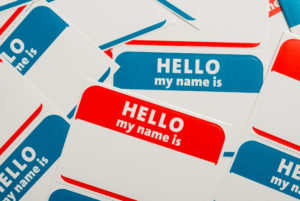by John Jensen
Confusion can result when one gift vehicle has many names.
Imagine this: An elderly donor decides to name your organization as the beneficiary of her savings account through a POD (Payable on Death) designation. She contacts her bank manager to arrange the gift, only to be told that her bank doesn’t offer POD accounts. The donor, clearly frustrated, contacts you. What should you do?
I recently received a call from a client seeking help in resolving this exact situation. The bank in question was a major national institution, yet the bank manager wasn’t familiar with the term POD.
After some investigating, the charity and I discovered that this bank does in fact offer POD accounts. The manager did not understand the term because his bank refers to them by a different name. We worked quickly to get the POD established, but unfortunately not before the donor experienced some frustration with the process.
What are PODs?
Simply put, a POD account simplifies the dispersal of funds from a donor’s savings account to a designated beneficiary at the donor’s death. A named charity simply has to present the bank with a copy of the donor’s death certificate. The bank then transfers whatever remains in the donor’s account to the charity.
What’s in a name?
While POD accounts are legal in nearly all states, there are a few states that don’t allow them. In these cases, however, state law typically permits a similar setup under a different name. Whether this is called a Totten trust, ITF (In Trust For), a POD or a revocable bank account trust, the effect is the same.
If your donor’s bank does not seem to understand what a POD account is, your donor should ask for a survivorship form. The donor should say she is not looking to create a joint account but instead wants to transfer the money from the account to someone else at death without having to go through the probate process. This approach should enable the donor to get the right form to list your organization as the beneficiary and, in effect, establish the POD.
 Tip: Do you have a donor who is looking to do the same thing for a securities account with an investment firm? Have them ask for the Transfer on Death form. This is exactly the same thing, but for securities rather than bank accounts. In some states it is also possible to transfer real estate in a similar way using a “transfer on death” deed. Because of differences in state laws and local customs and practices, donors should always check with local advisors
Tip: Do you have a donor who is looking to do the same thing for a securities account with an investment firm? Have them ask for the Transfer on Death form. This is exactly the same thing, but for securities rather than bank accounts. In some states it is also possible to transfer real estate in a similar way using a “transfer on death” deed. Because of differences in state laws and local customs and practices, donors should always check with local advisors
concerning these types of account designations. ■
John Jensen is a Senior Vice President and Senior Consultant for Sharpe Group.


